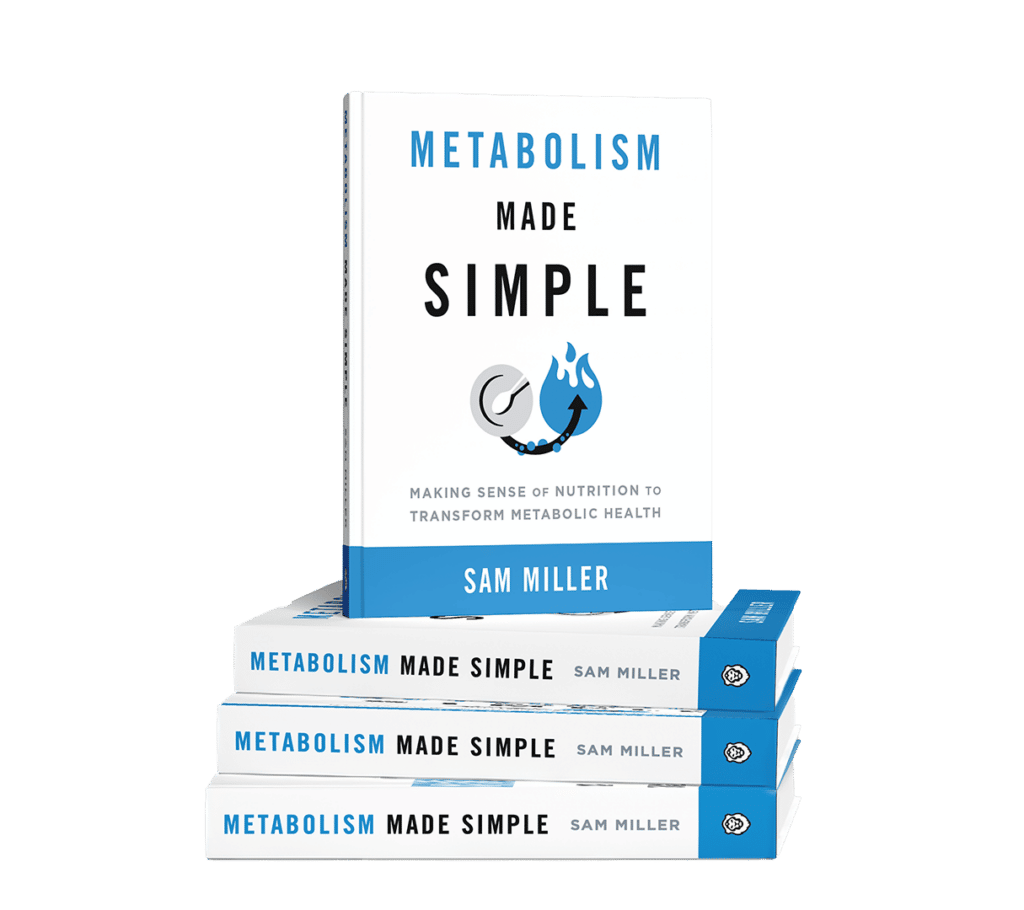Complex Cases are Increasing – Don’t Make These Mistakes
As a coach, we’ve all been exposed to complex cases in some form or fashion, and if you haven’t yet, you will be. Maybe you were doing a discovery call and when the issues started pouring out, you already decided you were going to refer out before they got done talking.
Maybe you’d signed a client that wasn’t as forthcoming on the discovery call, but when you’re looking over their intake form, you think “…What have I gotten myself into?”
As time goes on, complex cases are becoming more common given the direction that the population’s health is heading. In most cases, they’re being left out in the cold by western medicine as well.
It can be tough to know where to start with these cases and also how to proceed, so to help you on your roadmap, we’ll be laying out 7 common pitfalls that I see when coaches deal with complex cases.
Throughout my years of being in the industry, I’ve seen many of these pop up whether it be from coaches content on instagram, talking to other coaches, and now especially coaching or guiding other coaches, so I’d encourage you to read all the way through if you’re struggling with any sort of complex clients right now to see if any ring true with you.
1. Only Adjusting Macros, Calories, Sets, and Reps
The most obvious one, but it has to be said. Human biology is extremely complex, and if your client is dealing with multiple issues such as poor gut health, PCOS, systemic inflammation, etc, AND you want to be the one to help them get rid of these issues, then only adjusting macros, calories, sets, and reps simply isn’t going to cut it.
Let’s bring things back around to a frame I’ve used many times in my content in the past: stress and energy. Many issues can stem from different buckets underneath those two categories, and if we’re only adjusting food amount and exercise, we’re potentially missing a ton of the picture.
Yes, increasing food when someone’s been under-eating can certainly help mitigate physiological stress, and reducing exercise when someone’s physiologically over extended can also do wonders, but most people will need more, and what do we do when a client is already eating and exercising appropriately?
Many people don’t realize the span of what falls underneath stress. This includes internal stress from many different issues, and as we peel back layers, we start to see how many moving parts there are.
For example, four big arms of stress would be glycemic stress from insulin resistance, circadian stress from poor sleep routines, jet lag, night shift work, or social jet lag, then inflammatory stress, and finally perceived psychological stress.
Peeling back the layers further, we could be getting circadian stress from insomnia due to poor sleep hygiene, gut issues, certain micronutrient inadequacies, etc. This circadian stress would then affect glycemic control, which can also elicit inflammatory stress as well.
Going back to the top of the chain, gut issues and IBS can be a certain type of inflammatory stress, which, through the gut-brain axis, can affect our perceived psychological stress through alterations in HPA axis function and neurotransmitter production.
There’s many other examples here, but the main take home if you want to be a high level, timeless coach, you’re going to have to expand your skillset beyond modifying calories, macros, and exercise.
2. Missing Low Hanging Fruit while Trying to Focus on a Complex Intervention
I really see this particular phenomenon surface in coaches that are past the beginner coach point and are climbing up the Dunning-Kruger curve. Maybe they’ve been coaching for a bit and took one continuing education course about gut health protocols and are super excited to apply the knowledge, which is understandable.
Let’s paint the picture; the coach starts working with a new client who has pretty bad gut health, but they’re also eating a standard American diet, have poor or broken-up sleep, aren’t exercising much or at all, etc., and this coach decides to employ a gut protocol with them as the main focus. Maybe at the same time, they’re not focusing so much on the other aspects like sleep that really matter here as well.
There are multiple issues here. The main issue is that with someone with so much low hanging fruit, the main movers in gut health could potentially be simply working on the low hanging fruit.
A standard American diet is dysbiosis-inducing in general and can raise the risk of bad gut issues. Poor sleep raises sympathetic tone, which lowers stomach acid and digestive capacity, etc.
The point is that simply by working on low hanging fruit and mastering the basics with this client, we can potentially totally mitigate their gut issues, but not only that, these steps can potentially do wonders for any other issue they might be experiencing such as fatigue, poor body composition, etc.
When I refer to the basics, I mean things like eating a quality, mostly whole foods diet, adequate fiber intake, chewing food well, sleeping well, exercising an appropriate amount, and getting a good amount of general low grade movement. Bonus points if you get in walks after meals.
There’s certainly a time and a place for more complex interventions like a gut protocol, but they need to be done at the right time with other systems taken into account as well.
3. Misusing a Reverse Diet
Since reverse dieting has become so much more mainstream these days, I do see it being both overused and misused in cases where it might not have any effect, and in some cases may cause more harm than good. I actually did a podcast on 5 reasons reverse dieting isn’t a solution, and that’s episode 286, so check that out if you want to dive more in depth.
Reverse dieting is great and can work absolute wonders when it’s needed. A couple of applications may be after a contest or photoshoot prep, or if someone’s not necessarily obese but has that last 10-25lb to lose and is over exercising and under eating like crazy. That also doesn’t mean we shouldn’t look deeper at potential reasons TDEE can be suppressed.
For a few examples of other reasons your client may not be losing weight, it may have something to do with their health status. Thyroid issues are the first that come to mind in terms of lowering energy expenditure, but being a night shift worker does as well, as does having PCOS (especially if its insulin resistant PCOS).
A large subset of obese individuals with insulin and leptin resistance will have lower than expected energy expenditures as well, and reversing these folks could just be pouring more fuel on the fire.
If you employed a reverse diet and it didn’t actually work to raise TDEE, it could also simply be that you didn’t resistance train the individual with progressive overload during the reverse. If we dont put on some lean tissue during that time period, the effects on raising TDEE at the end of the process won’t be near as large.
If you want to dive much deeper and expand your skillset around all this stuff, I’d encourage you to check out www.metabolismschool.com, because this is exactly the type of knowledge and skills that we arm our FNMS coaches with.
4. Not Testing Enough OR Testing Too Much and Misusing the Data
Let me first summarize what I mean by this point. In the vein of not testing enough, there are very established tests that can give us, as coaches, great information to be able to target certain lifestyle interventions. These would be things like both routine and non-routine serum labs.
On the side of testing too much, this would mainly be in the vein of newer, functional tests such as a stool test or an organic acids test.
Don’t get me wrong, these tests can be great in the right client context and if used correctly, but its certainly not immediately obvious how to do so.
It takes a lot of big picture integration skills, knowledge of literature of which markers are valid and which arent, etc, in order to do this successfully. The marketing is way ahead of the clinical validation on many of these tests, so they can be misleading.
Let’s expand on “Not testing enough” first. Your client is suffering from an issue that can have 10-15+ causes, lets just say fatigue. A routine set of labs could help us rule out or elucidate several of these causes. Within the bucket of routine labs, we could see a CBC and look for anemia, a thyroid panel to look for thyroid issues, we could look at certain markers on a CMP for micronutrient suboptimality or deficiency that could translate to fatigue, or we could look at markers of insulin resistance to see if this is playing into it.
If we don’t run at least routine labs like this that are well-validated, we’re guessing and grasping at straws as to what the issue may be.
In any case, on the side of some of the functional tests I mentioned, these are much more ambiguous, and require a lot of skill and context to interpret and use correctly.
These tests haven’t been validated to the point where we can say “X and Y bacteria families are high on your stool test, so these are the exact interventions we need to do”. The recommendations that come with these tests often conflict with one another and may even be counterproductive.
It simply doesn’t work like that at the moment, and we need to take certain pieces of data from these tests and combine them with client biofeedback, serum labs, and other aspects to be able to use them to actually drive decisions in programming.
I see many coaches in the space using these and their clients end up on an entire intervention that may be missing a big aspect, or overdoing another. We do go over some of the functional tests in FNMS such as the DUTCH test as well as various stool and functional GI tests so you can build your skillset around those.
5. Over Supplementing While Missing Foundational Lifestyle Interventions
I also see this happen in coaches that may have a lot of knowledge around supplements, but might be missing how they should be used in the context of the bigger picture. There are plenty of examples here.
Take sleep; this is one with a lot of lifestyle low hanging fruit that can be missed. If you have a client with insomnia and the first thought is loading them on magnesium, l-theanine, valerian, melatonin, etc, but they’re still not using blue blockers after dark, not getting morning sunlight, and not doing all the other foundational aspects of sleep and circadian hygiene, then we’re putting a bandaid on an amputation here.
We could also go back to gut issues again as an example. I’ve seen plenty of examples of coaches or even functional medicine practitioners loading clients up on probiotics, antimicrobials, digestive enzymes, such that the client ends up on 20+ supplements, yet nutrition and diet modification ends up being an afterthought or a secondary consideration, whereas it should be the foundation.
This could also be applied with something as simple as missing micronutrients. In other words, giving a single or combo micronutrient supplement Instead of trying to make a few simple food swaps or inclusions for micronutrients that you deem your client may need.
Don’t get me wrong, there are many situations in complex cases where we need more of certain micronutrients than we can realistically get in food due to stress, inflammation, or another reason, but we should always make an effort to cover bases with food first.
6. Missing Layers of Biofeedback Interpretation
Most of you that have been following for me a while know how much I talk about biofeedback, but as a refresher and for the folks that are new to my content, I use a simple model called the SHREDS model: Sleep, hunger, recovery, energy, digestion, and stress.
Keeping track of how your client is doing with these 6 metrics can be very telling about their current health status and can guide client interventions arguably as well as more numbers-driven metrics like labs can.
However, coaches new to using biofeedback like this might not be using it to it’s full potential. Let’s draw out a scenario really quick.
Coach Jennifer has just learned about biofeedback and decides to ask about client SHREDS on her intake form and also keep track of these metrics at check-ins.
However, maybe the question is just “How is your sleep?” or “Rate your sleep from 1-10”, which can result in accidental miscommunication if the coach and client aren’t on the same page. Even a more specific question like “How many hours of sleep do you get per night?” could potentially be misunderstood by the client.
Let me explain a bit more. People can have drastically different definitions around what good sleep might actually be, so if the question is as vague as “rate your sleep” or “how is your sleep”, important details may be missed.
Some people may consider 6 hours of sleep per night a solid amount, but we know optimal is going to be 7-8, and consistently missing those 1-2 hours can make a huge difference, but we wouldn’t know this if we didn’t ask specific questions.
Getting to the more specific question though, even asking “How many hours of sleep do you get per night?” could be misinterpreted by the client as well. For example, they might answer with how many hours they’re in bed and not actually asleep, and these are two very different things.
Instead, we should have more specific questions to get to the bottom of this. Asking when they go to bed and how long they feel like it takes them to actually fall asleep, asking how many night wake ups they tend to have, asking if they know if they snore or not (which could be a signal for sleep apnea), etc.
We could also potentially ask questions around objective lifestyle aspects that are known to impact quality sleep. Do you watch TV late at night without blue blockers? How often do you drink alcohol within a few hours of bed? When is your last caffeine-containing beverage in the day and how much caffeine are we taking in overall?
This could go well beyond sleep as well; specific biofeedback questions around gut health are invaluable in directing what type of intervention we do if all the low hanging fruit are taken care of, but going into depth here is a little beyond the scope of this post.
7. Siloed Thinking Around Client Issues
This is another one that a few of our other points I already talked about relate to, and one I see happening similarly in coaches that have a little bit of advanced education, but still aren’t putting ALL of the pieces of the puzzle together.
Let’s take thyroid health for example. Maybe the coach took an advanced course in thyroid health that talked about micronutrients needed, lifestyle aspects, and potentially herbal formulations that can help with those specific issues.
Then the coach goes ahead and applies what they learned specifically for the thyroid, but at the same time the client has a myriad of other issues that could potentially interplay with the thyroid, such as gut issues, circadian disruption from night shift work, and they’re anemic, but the course didn’t teach them how these issues interplay with each other.
Then after 3-4 months on thyroid specific supplements and interventions, the clients thyroid function and symptoms associated with it still aren’t improving and the coach is left wondering why. The answer lies in the fact that biology doesn’t work in silos, every organ and body system affects at least 1-3 others, and some a lot more than others.
Instead of the approach of piecemealing together random courses that dive deep into only one system, you should really start out with building a great foundational base on all body systems and how they interact with each other, and then dive deeper into specific ones so that you have the context.
Conclusion
That wraps up the 7 most common mistakes I see coaches making with complex client cases. If you’ve done some of these that I mentioned, or maybe you realized you’re doing some of these right now, its certainly not something to be ashamed of; every coach has gone through that period, and we just have to continue to learn and refine through education and practice.
This is exactly the type of thing that we do in FNMS. Not only do we give you guys perspective by teaching how these biological systems interact in a big picture way, we also dive deeper into specific systems in tandem and teach the nitty gritty as well. If you want to check it out and up level yourself as a coach, check out Metabolism School.

















